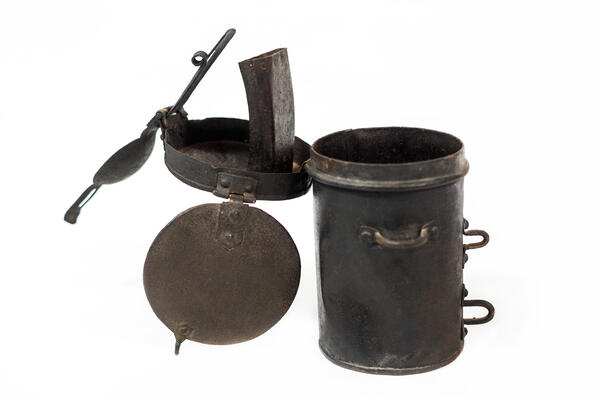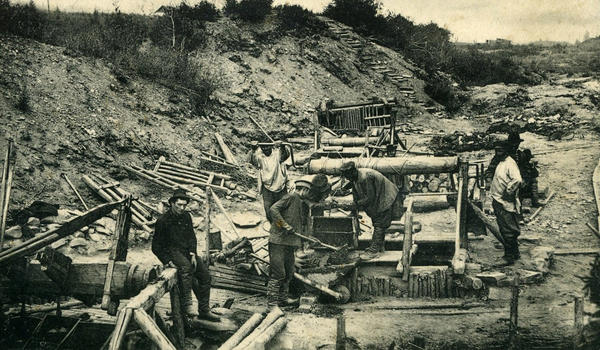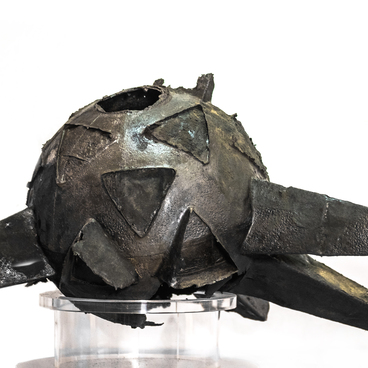In the Urals, prospectors were the workers who mined gold manually, individually or as members of an association. They would give everything they extracted to the owner of the mine and receive a payment, between 2 and 2.4 roubles in silver for each zolotnik (4.27 grams). The prospectors were also often mineworkers who worked overtime.
Gold prospector's mug
Время создания
Late 19th century
Размер
Height: 13.5 cm, diameter: 9 cm
Техника
Iron, stamping
Коллекция
8
Открыть в приложении#1
Gold prospector’s mug
#3
#8
The gold sand was poured into a special mug, which was then locked. If several prospectors worked in the association, each of them hung his own lock on the mug, and kept the key with him. In this way, the container could be opened only in the presence of the entire association.
#9
A tube with a linen bag tied to it was attached to the inside of the mug. Golden sand, poured through a tube into the bag, could not be accidentally spilled or deliberately shaken out, even if the mug was turned upside down. But old residents of the NevyAnsk region said that dishonest prospectors sometimes would resort to deceit. They wrapped a beetle with a harsh thread and, after smearing its legs with honey, they lowered it into the hole of a mug. The grains of gold stuck to the beetle’s legs became the booty of another prospector or clerk. But if somebody was caught doing this, he would be severely punished.
#4
#5
The discovery of Nevyansk gold is surrounded by legends. One of them was told by the famous scientist and academician Peter Simon Pallas, who traveled the Urals in the 1770s. He wrote that ‘near Nevyansk, in a burnt stump on a field, a raskolnik [religious dissenter] found a piece of gold weighing one pound and twelve zolotniks (this is about 500 grams), and gave it to the Yekaterinburg chancellery.’ Other authors also mention the name of this raskolnik: Aleksey Fyodorov. There were rumors that he was imprisoned by order of the Demidovs, so as not to draw attention to the Nevyansk mines.
#10
According to archive documents, ‘ore stones, similar to gold ore’ were first discovered in the vicinity of Nevyansk in the 1760s by the peasants Savva Tretyakov and Semyon Sivkov. The Mining Chancellery rewarded the gold miners ‘for mining ores’, freeing them from duties and giving them 50 roubles.
#11
In 1819, the first gold mine appeared in the Nevyansk area. A few years later, there were 19 mines, and about 2,000 people worked in them.
#12
State Autonomous Cultural Institution of the Sverdlovsk Region "Nevyansk State Historical and Architectural Museum"
читать дальшескрыть
00:00
00:00
1x
Gold prospector's mug
Время создания
Late 19th century
Размер
Height: 13.5 cm, diameter: 9 cm
Техника
Iron, stamping
Коллекция
8
Открыть в приложении
Поделиться




